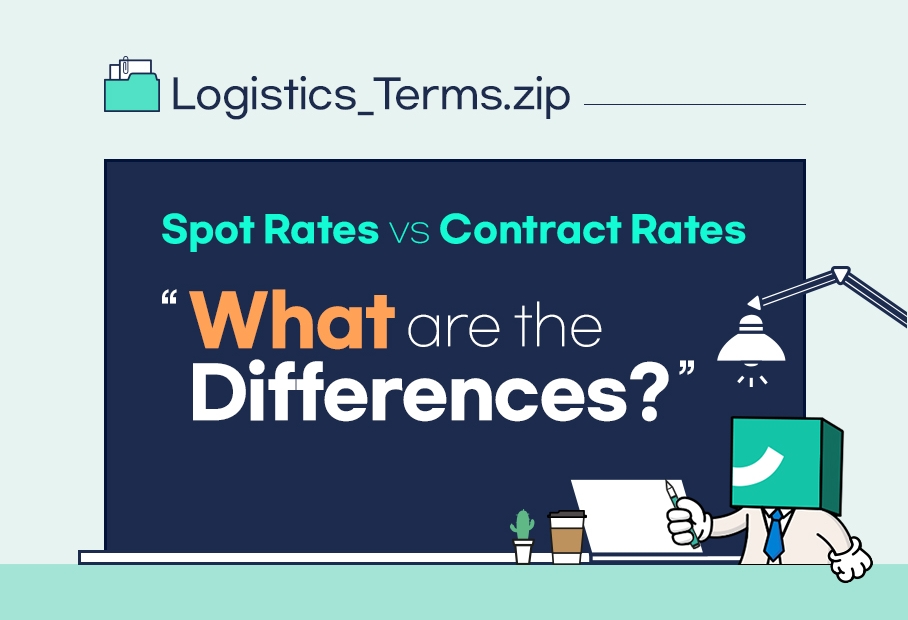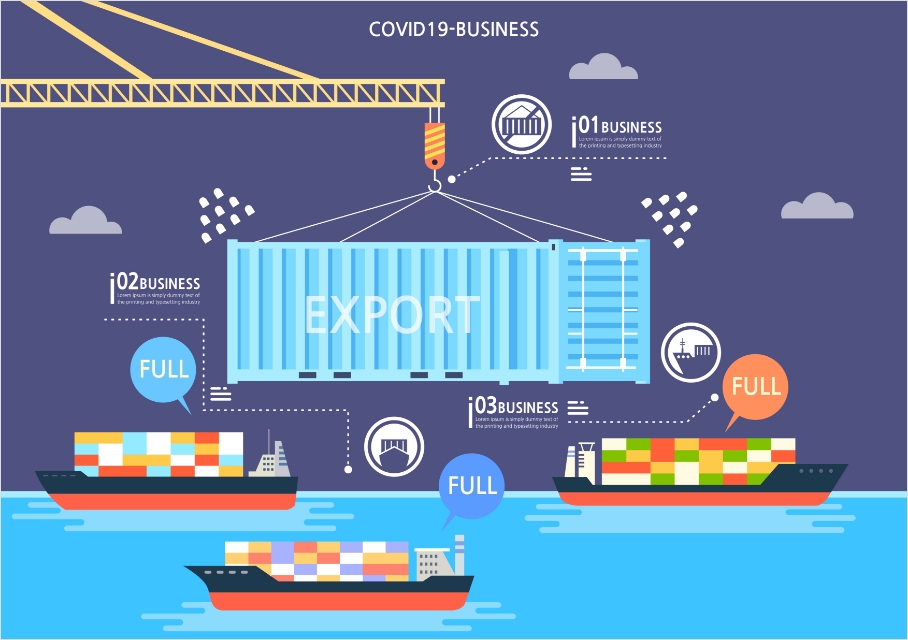
Logistics freight rates can generally be divided into spot rates and contract rates. In practice, shippers rarely operate their entire freight volume on spot rates or contract rates alone, and usually use a mix of both. Understanding when to use one or the other is essential to keeping supply chain costs low. In this article, we will take a look at what spot and contract freight rates are, how they differ and correlate, and which one is more favorable depending on the situation.




1) Transit time: In case of urgent shipments
2) Probability of return: If there is a low probability of securing a return shipment at the destination
3) Value of the shipment: In case of expensive, high-value shipments
4) Weight of the shipment: In case of heavy shipments
5) Transportation requirements: In case of dangerous goods, batteries, etc. that need to be transported by qualified personnel using special equipment
Since spot rates reflect the balance of supply and demand in real time, they tend to increase during periods of high demand and decrease during periods of increased supply.
- Example 1) COVID-19: As logistics demand surged globally, spot rates increased significantly. This is due to the global supply chain being disrupted by the COVID-19 pandemic, which has caused issues such as ship disruptions.
- Example 2) Year-end peak season: Spot rates tend to increase at the end of the year, when logistics demand increases globally. This is due to an increase in shipments of gifts and goods ahead of holidays such as Christmas and New Year holidays.
- Example 3) Post-COVID-19: As the COVID-19 pandemic has eased, global supply chains have recovered and ship operations have resumed, causing spot rates to fall. This is because supply has increased, balancing supply and demand.


The advantage of contract rates is that you can make a long-term logistics planning, and a certain amount of space is guaranteed for each week or month. This ensures a stable logistics supply and allows you to predict logistics costs.
Contract rates are mainly used by large exporters and manufacturers, who can negotiate a good deal with the carrier because they are transporting large quantities of goods. The carrier is often willing to negotiate a good deal because they can earn a stable profit by securing large volumes.

1) The value of the shipment: If the value of the shipment is low
2) Route and frequency of transportation: If the route is the major route serviced by the carrier or has a certain level of frequency that allows the carrier to make a profit
3) Volume of cargo: If the cargo is high in volume and a certain quantity is guaranteed
4) Regularity of cargo: If the frequency of cargo transportation is constant and the volatility is low

In the midst of COVID-19, the global supply chain experienced an enormous scale of supply chain disruptions, as there was simply not enough transportation capacity to meet the surging demand due to congestion in vessel and equipment operations. This resulted in spot rates that were more than 10 times higher than average at the time. Nevertheless, shippers were not guaranteed any vessel space or equipment. At this time, some carriers entered into long-term contracts with shippers at rates lower than spot rates but higher than average contract rates in anticipation of the market stabilization in the near future. Conversely, competition for contract rates has recently intensified, which has led to an increase in spot rates.

A relevant example is the annual "Trans Pacific" contract signing season. During this season, shippers tend to delay signing contracts in anticipation of further declines in spot rates. This is because the longer they wait, the more likely it is that spot rates will fall further, which puts them in a position to negotiate lower contract rates with carriers.
Recently, spot rates have been rising due to supply chain disruptions like the Red Sea crisis, which can lead to higher contract rates. Since spot rates fluctuate based on short-term supply and demand, when supply chain issues occur, spot rates rise quickly as supply becomes scarce. Contract rates are used for long-term, stable logistics planning, but sometimes carriers will increase contract rates when supply chain issues arise.

If you have relatively consistent factors in your production process, such as the load amount and timing, contract rates are best suited for you. Contract rates allow you to have a stable logistics operation, which makes planning and budgeting easier. You will be able to collaborate strategically with your carrier, track performance, and quickly turn around issues.
- Better planning and budgeting
How can you plan and budget when your freight costs are out of whack? You never know if a big event will happen next week that will cause your freight costs to skyrocket. But with contract rates, you can plan and budget for a stable contract period.
- Opportunities to work with strategic carriers
The more a carrier works with a shipper, the stronger the partnership becomes. This can be beneficial for both parties in many cases. For example, shippers can get discounts and send shipments faster without using the spot market. Since both the carrier and shipper already have a productive work history and relationship, they are more likely to be able to solve problems on their own.
- Increased likelihood of securing capacity
Not all contracts guarantee capacity, but most do. Even in contracts that don't guarantee capacity, the carrier is likely to be proactive in helping you secure capacity.
- Easier to track performance
Having a reliable freight transportation service makes it easier to track business performance. Contract rates stabilize your shipping costs and make it easier to calculate your business performance.
- Rate Basis
Contract rates are often negotiated as part of a short-term business model without long-term customer relationships, and are negotiated at a lower cost than spot rates.
- Freight regularity and seasonality
Contract rates are best suited for freight that is regular and less subject to seasonal fluctuations.
- Minimum volume
In the case of contract rates, shippers agree to a minimum volume of freight to be delivered to a carrier over a period of time.
2) Spot Rates
If your company's operations have a lot of variability in terms of timing, size, and destinations, spot rates may be a better option. Especially if you need to be flexible with the transportation of your products, spot rates may be more expensive in the short term, but in the long run, they can be a more efficient choice.
- Validity period
Spot rates are often one-offs and have a very short validity, essentially meaning that you are participating in a spot market.
- Tactical or strategic
Spot rates are a tactical approach that relies on short-term commitments and the spot market to secure the best rate now.
- Specific vs. recurring
Spot rates are used when you have an unexpected or irregular flow of freight, while contract rates are used when you have a continuous and constant flow of freight for the duration of the contract.
- Volatility
Due to the temporary nature of spot rates, they are highly volatile and dependent on a number of factors.
- Freight regularity and seasonality
Spot rates are used for cargo that is subject to seasonal fluctuations or specific events.
- Volume
For spot rates, the volume of transportation is usually not high, or if it is, it is handled in one go or spread out over a very short period of time.
- Rate Applicability
Spot rates are the rates prevailing at that point in time in the market and apply equally to all customers. Shippers who make spot bookings can expect to have fairly uniform rates, with only minor fluctuations based on specific causes.



